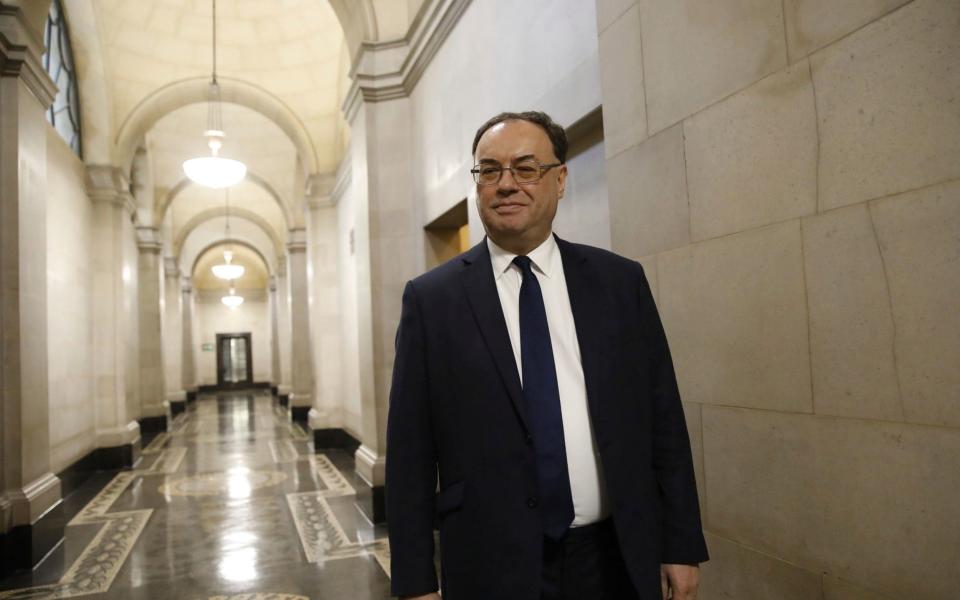Bailey: 'Go big and go fast' to tackle crisis

The Bank of England has the firepower to "go big and go fast" with vast stimulus to tackle future downturns in the wake of Covid-19, Governor Andrew Bailey has said.
Mr Bailey, speaking online at the Jackson Hole central banking symposium, said new research showed the Bank’s money-printing efforts had the most impact during episodes of major turmoil.
Threadneedle Street is reviewing its arsenal of policy tools, including the “possibility” of using controversial negative interest rates for the first time, the Governor said.
Policymakers have already slashed interest rates to a record low of 0.1pc and pumped £300bn into the economy through quantitative easing (QE) since the Covid-19 pandemic struck in March.
But Mr Bailey said: “We are not out of firepower by any means, and to be honest it looks from today’s vantage point that we were too cautious about our remaining firepower pre-Covid. But, hindsight is a wonderful thing when you have it.”
The Governor said there were “times when we need to go big and go fast” on QE, after the pandemic threatened to overwhelm gilt markets when panicked investors made a “dash for cash”.

The Monetary Policy Committee made a rapid £200bn injection to calm markets in March before it slowed the pace of its next £100bn move in June.
Mr Bailey said: “Looking at the UK case, there indeed is some evidence that the impact of QE over the past decade has been largest at times of market dysfunction and illiquidity … but, if this result proves robust, it suggests that 'going big and fast' with QE is particularly effective in these conditions.”
He emphasised that big moves to shore up markets are likely to be temporary, and added that policymakers will need to cut the size of the balance sheet, which stands at £745bn or 30pc of GDP, to give themselves headroom to tackle future crises.
Mr Bailey added the Bank could also expand the assets which it buys with newly minted cash - potentially pointing to further investments in corporate bonds alongside the Government debt, or gilts, which is the main target of current QE.
Philip Shaw, chief economist at Investec, said: “The danger is that you can’t unwind the balance sheet fast enough before you need to loosen when the next downturn arrives.”
Central bankers have fretted over a lack of firepower to tackle downturns as interest rates crash to zero - and into radical negative territory in the case of the Bank of Japan and the European Central Bank, meaning banks are charged for holding onto deposits.
Mr Bailey has the task of reviving the UK economy after it contracted by a fifth between April and June. The Bank does not expect GDP to regain its pre-Covid peak until the end of next year.
But Kallum Pickering, senior UK economist at Berenberg, said fears over a lack of ammunition are always overdone due to investor demand for safe-haven assets such as gilts.
He said: “As long as people are willing to hold pieces of paper with the Queen’s face on then the BoE never runs out of firepower. The central bank always has the ability to end – or prevent – a crisis by creating new money.
“The question is whether or not central banks have the scope to accelerate a recovery once the crisis has been brought to an end – that’s where the real question of a lack of firepower lies.
"The growing evidence suggests that rate cuts are better at stimulating faster GDP growth during a recovery than unconventional measures like QE, hence the zero lower bound is a constraint.”

 Yahoo Finance
Yahoo Finance 